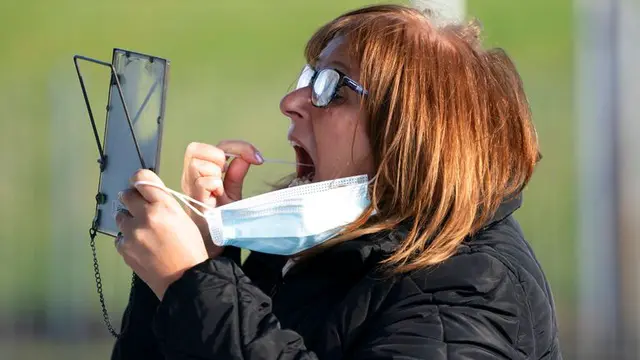Rapid lateral flow tests are 95% effective at detecting coronavirus if they are used at the onset of infection or as soon as symptoms start, a new study suggests.
Scientists have previously said that lateral flow tests (LFTs) are less sensitive at picking up
COVID-19
cases than laboratory tested PCR swabs.
But a study of more than 2,500 people with flu-like symptoms has shown that LFTs picked up 95% of the
coronavirus
cases that the PCR tests did.
It also correctly identified 89% of
COVID
cases as negative.
What are the different types of COVID-19 tests?
LFTs function like pregnancy tests and look for coronavirus proteins to detect cases and take just 30 minutes.
PCR (Polymerase Chain Reaction) tests are laboratory tested and can take up to three days to process.
The research, carried out by experts at Queen Mary University of London, Oxford University, the Institute for Advanced Studies in Vienna and the Medical University of Graz, is the first to compare the two forms of testing on a group of this scale.
Patients involved in the study were assessed by GPs in Liezen,
Austria
.
The results were consistent across different brands of testing kit, three different laboratories and testing and 20 GP surgeries.
**Follow the Daily podcast on **
**Apple Podcasts, **
**Google Podcasts, **
Spotify,
** Spreaker**
Author of the study, Dr Werner Leber, of Queen Mary, said: "Previous studies have suggested lateral flow tests may be less sensitive than PCR in detecting COVID-19, particularly among asymptomatic individuals and during the early or late stage of an infection when the viral load is lowest.
"But we have found that in patients who are newly symptomatic, the two testing methods have similar levels of accuracy."
Dr Jasmina Panovska-Griffiths from the Big Data Institute at the University of Oxford added: "In our study, both shorter duration of symptoms and higher viral load were significantly associated with positive lateral flow tests.
"This highlights the necessity of testing at early infection with lateral flow tests, and shows that in patients who are newly symptomatic, the two testing methods have similar levels of accuracy."
 简体中文
简体中文

